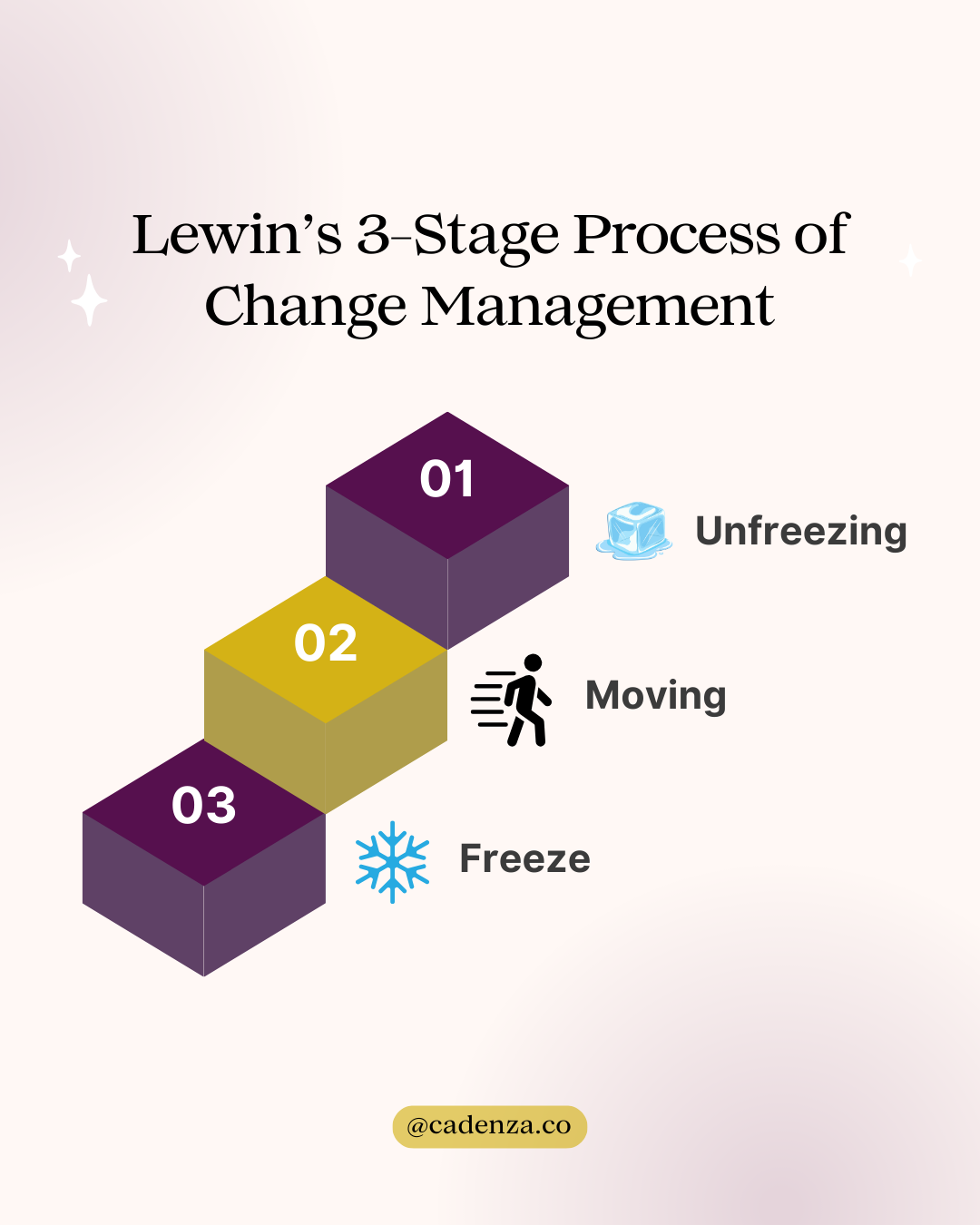CEO Communication
How Change Leadership Lets Your Team Ride the Jetstream of Change
The vital skill of change leadership should hit item number one on your agenda if you’re scaling or transforming your organisation. Here’s how…

IIn seeking to transform your organisation and benchmark new opportunities, the vital skill of change leadership should hit item number one on your agenda. In this article you will learn how change leadership lets your team ride the jetstream of change.
The drive to innovate the workings of an organisation often pits the aspirational and visionary founder against a reluctant and grudging crowd of humans who tend to enjoy the comforts of familiarity, routine and repetition.
If you’re a CEO, Founder, Leader or change manager, no doubt you’ve pondered extensively:
“What cinches organisational change success?”
Change leadership allows a leader to gain momentum, protecting the organisation when the costs of failure to scale or survive far outweigh remaining the same.
What is Change Leadership?
Change leadership is the explicit process through which a CEO, Founder or leader strategically communicates the next steps persuasively and assertively to ease the success of change throughout the organisation at scale.
It is a set of communication behaviours you can incorporate to optimise the behaviour of your team and protect your organisation from risk in the face of change.
Whether you’re seeking to innovate, transform or drastically modify the workings of your organisation or company, change leadership is your responsibility as CEO, because of the direct impact on your human capital.
This blog post is best digested in 3 parts:
- Check the tips for summarised below
- Watch the vlog for more detailed training.
- If you want to optimise your voice tone, boost your speaking & express yourself clearly, sign up for the Executive Communication Training only with Cadenza.
A roadmap to transform an organisation may seem seamless and logical- if only humans were so. Every manoeuvre, adjustment or alteration you set up within your company impacts your personnel, customers and top talent, so this article will provide you with some frequently overlooked principles that influence the success or failure of organisational change.
Lewin’s 3 Stage Process of Change in an Organisation
Just as the steps of change implementation vary over time, so should your communication approach. Communication with team members needs to be strategically balanced to incorporate both a pre-emptive and responsive approach.
Lewin’s 3-Stage Process of Change Management provides a useful way for considering how change unfolds from inception to implementation.
Unfreezing
The timeframe in which your communications are geared to motivating your key players to move towards change at the outset.
Moving
The phase in which your communications are geared to implementing change.
Freezing
The phase in which change is made permanent.

These 3 critical stages should inform a tailored communication strategy that considers unique variables such as your team, the changes you’re introducing, your communication style as a CEO and founder, and more. Different change leadership practices are recommended across each step. The best way to prepare yourself for each step is to plan before reaching it, however, all is not lost if you find yourself a few steps ahead of your organisation
At Cadenza, we can assist you with concrete, research-informed change leadership communication tools that serve to align your vision as a CEO with your organisation’s behaviour.
What is the success rate of change management?
Unsurprisingly, even the most optimistic leaders can quickly lose faith in their team, considering up to 70% of change ventures need better deployment (Rosenbaum et al. 2018).
Change increases workload for the change manager and every individual within the organisation.
Successful change leadership seeks to keep organisational citizenship behaviour intact.
Organisational Citizenship behaviour is the unspoken behaviours your employees engage in that lie outside their minimum work requirements. Suppose you feel that your staff eclipse their KPIs and voluntarily outperform your expectations; handle this asset carefully. In that case, it’s usually the gift of trust and belief in the organisation’s value system.
The risks of mishandled organisational change relate to the inability to scale profits and innovation, but beyond that, your human talent can plummet, dragging all progress to a standstill. And, if you notice that organisational behaviour is already at an all-time low, put your seatbelt on before implementing changes because you’re in for a ride that only elite communication strategies can assist with.
Refer to this article for some advisable CEO communication tactics you can incorporate to position yourself more effectively as a change leader and gain influence and the clout to influence your team inspirationally.
Why does Change Management Lose Momentum?
Negative intensification bias tends to trigger an expectancy and focus on the worst of a new undertaking rather than the possible benefits.
Negative Intensification Bias
The tendency to “attend to, learn from, and use negative information far more than positive information” (Vaish, Grossmann, & Woodward, 2008, p. 383)
The human proclivity to negativity can cause teams with fixed mindsets to react, reject and respond with coping strategies that can thwart all attempts for organisational transformation.
The absence of an effective change leader will also have a negative impact on how stimulated the organisation is to embrace and incorporate change.
Effective change leadership will assist you to recondition and influence your team to embrace new perspectives and horizons.

Typical Coping Strategies that Employees may Demonstrate in the Face of Change
An extensive body of research has investigated common coping strategies that employees engage in when responding to changes like demotions, relocation or process, accountability and work flow adjustments.
- Lowered productivity (Gupta & Singla, 2017)
- Reduced engagement, passivity (Kotter and Schlesinger, 2008, Cascio et al., 1997)
- Absenteeism (Martin et al., 2005)
- Depleted job satisfaction (Wah, 1999)
- Incivility, verbal aggression (Gupta & Singla, 2017)
- Decreased morale (Cascio et al., 1997)
- Resignation (Brennan and Skarlicki, 2004)
Communicate with Ease, Confidence & Expertise
CAREER TRANSFORMING COMMUNICATION SKILLS TRAINING
We’re helping you to become the communicator everyone listens to. Download our brochure to find out which training fits for you.
Managing Employee Reactions as a Change Leader
Rolling out change management incurs increased workload, not only for every team member in the organisation but for the change leadership process. The change leader is likely to experience an exponential increase in their workflow and time commitments while planning the course for transformation.
With an increased workload, how can a leader prepare for the emotional indemnity raised with the cost of negative organisational behaviour?
The human tendency for negative bias is something that no change manager or founder can control. Emotional reactions and perceptions among employees will run like wild horses. Despite this, a leader can streamline organisational behaviour like a diagnostician to predict pushback points, pre-empt negative behaviours and instate clear and amenable rules of play.
Influential change leaders seek to hypothesise, inquire and respond to the emotions of the individuals they lead in the mission to gain congruence and alignment between the team and the new processes, methods and ventures. This process is mitigated through the implementation of strategic communication strategies and is a trainable skill.
Research indicates that employees will demonstrate various coping strategies that can deleteriously affect the founder’s vision and scaling goals. Knowledge of the potential for these negative behaviours to come out to play in the face of change, even among your top talent, is the best way to prepare for the complex implementation process.
Behaviours like lowered productivity are natural extensions of an organisation’s failure to deploy an integrated and thorough change leadership based on a management communication plan. Process models and analytical approaches may seem logical. Still, change deployment can rapidly neglect the essential emotional intelligence principles that should inform every conversation and step involved in rolling out organisational change so that organisational behaviour does not jeopardise the stretch goals more than maintaining the status quo.

Castillo’s Emotional Stages in Organisational Change
In 2018, academic Cristian Castillo proposed a model for understanding the emotional stages of personnel caught in the throes of organisational change. This model has since been validated and is a valuable guide to considering possible employee reactions to change initiatives as a CEO, founder or change manager.
If you’re a CEO on the brink of a change management plan, knowing the six emotional stages employees can move through can make you better prepared. Each of these behaviours relates to possible trajectories your team members can take in the face of a negative impression of change.
#1 Denial & Anger
Here, the individual experiences disbelief or Anger at the unexpected nature of the change. Self-regulation within this stage will be challenging for employees without emotional intelligence tools to navigate high-pressure contexts.
#2 Bargaining
The individual seeks to navigate new boundaries to gain advantages and benefits in the face of change. Sometimes, this behaviour may be coercive, directorial or manipulative; in other cases, it may be a civil measure to seek a positive solution to the new status quo or process.
#3 Depression
Here, the individual experiences a well-being impact due to the pressure and stress of the change or depleted interpersonal relationships at work that have a mental health impact.
#4 Revising
The moment at which an individual may reconsider their position and future with the organisation owing to dissatisfaction with the changes, their new identity or the new influx of perspectives that arise with change introductions
#5 Deserting
The individual nominates to leave the organisation
#6 Acceptance
The individual eventually resigns themself to the change and accepts it, or embraces the changes as the new mode of operating
While it can be challenging to hypothesise where your team members are in your change leadership undertaking, generalising change leadership conversations to one stage is risky.
Strategic communication can ensure you for heightened fallout, set the boundaries in the bargaining scenarios and give you clarity of thought for any unexpected curve balls your team members throw at you. Executive Communication Consultations at Cadenza can assist you in developing a plug-and-play approach to change leadership activities so that your communication is poised, composed and conflict-de-escalating to encourage optimal employee responses and rapport in tense conversations.
“To foster change, organizations have to modify the attitude of people with flexibility, dynamism and responsiveness.”
(Subramanya, 2011)
Organisational change adjusts the employee-organisation relationship, for the better or worse. Implementing careful change leadership is a gainful way to reduce risk and engage in an emotionally intelligent leadership approach bespoke to the unique set of conditions, employees and needs of your organisation.
At Cadenza, we can help you to position yourself ready for change leadership by
- Enhancing your leadership communication skills, reputation management and presentation skills
- Developing your team’s communication abilities, emotional intelligence and ability to communicate more effectively under pressure.
Want to learn more?
References
-
Castillo, C., et al. (2018). “The six emotional stages of organizational change.” Journal of Organizational Change Management 31: 468-493.
-
Hussain, S. T., et al. (2018). “Kurt Lewin’s change model: A critical review of the role of leadership and employee involvement in organizational change.” Journal of Innovation & Knowledge 3(3): 123-127.
-
Lewin, K. (1947). Understanding the three stages of change (1947)
-
Rosenbaum, D., et al. (2018). “Planned organisational change management: Forward to the past? An exploratory literature review.” Journal of Organizational Change Management 31: 00-00.
-
Shivani Gupta, & Dr. Anju Singla. (2017). Organizational Change and Job Satisfaction: An Analysis of Mediating Effect of Organizational Trust. Indian Journal of Commerce and Management Studies, 7(3), 07–13. Retrieved from https://www.ijcms.in/index.php/ijcms/article/view/245
-
Subramanya, M. (2011) Managing change in organizations, HRM Review, Vol. 3(11), pp. 35-39
-
Vaish, A., et al. (2008). “Not all emotions are created equal: the negativity bias in social-emotional development.” Psychol Bull 134(3): 383-403.
Did you enjoy this post? Make sure to subscribe to our YouTube channel to get more content to increase your communication skills!
About the Author
Dr Sarah Lobegeiger de Rodriguez is a Keynote Speaker, Executive Speaking Coach, and Opera Singer who likes to play with words, sounds, and your impact.
Her academic background is in Music Performance, Communication Science and Speech & Language Pathology. She assists executive communication clients all over the world as a communication consultant with strong expertise in CEO, Founder and Entrepreneur communication strategies.
Connect with Sarah on LinkedIn.
© CADENZA
Level 14, 380 St Kilda Road, Melbourne, 3004
Privacy Policy
Terms & Conditions
Position Statement on Racism


